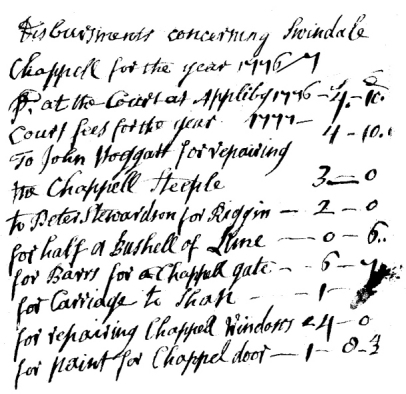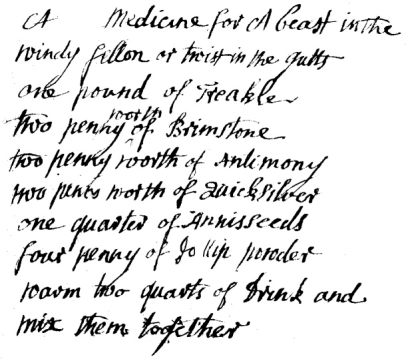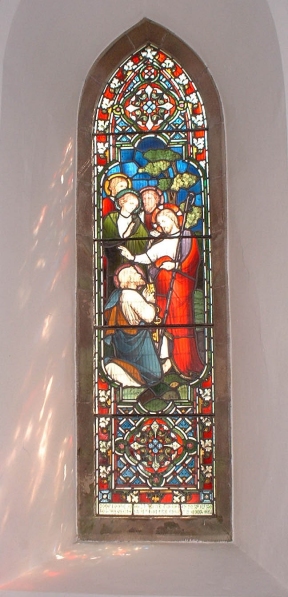

The Sewells of Swindale, Westmorland
by Eric L Sewell
This article was originally published in the August 2003 edition of Soul Search, the journal of The Sole Society
This article has evolved from an e-mail received earlier this year from Dave Wilson of Ontario, Canada, concerning his distant SEWELL relatives who had once lived in Swindale, Westmorland. Fortunately, I had some information at hand, since the Swindale SEWELLs, unlike many of the Cumbrians of that name, had been relatively easy to disentangle from the IGI listing. Almost all had been registered in the parish of Shap. Some appear in the 1851 Census but by 1881 the Sewells had totally disappeared from the area.
Swindale, on the eastern fringe of the Lake District, is an isolated valley guarded by crags and overlooked by Selside Pike (2142ft). Swindale narrowly escaped the fate of neighbouring Mardale, which was flooded in 1941 to form the Haweswater reservoir. Writing in 1957, Wainwright’s Lakeland Guide described Swindale as a ‘shy and beautiful little valley’ and ‘almost the only one remaining that does not cater for the motorist’. It lies within the Parish of Shap, a village between Kendal and Penrith on the A6 (by-passed by the M6), noted for the ruins of a Premonstratensian Abbey founded in 1119.
The earliest records of the SEWELLs of Swindale begin with Thomas SEWELL (c.1664-1749), farmer and miller, who resided at Thornthwaite Mill, just to the south of Bampton, and then at the manor house, Thornthwaite Hall. It was at Bampton in 1706 that Thomas married Margaret WRIGHT and where his children were later baptised. Thomas claimed his father to be James SEWELL of Swindale, but there are no records to confirm this assertion. Much of the history of Thomas SEWELL and his descendants relies on a collection of family documents found in a sack in a barn. In 1937, Kathleen Peachell published a slim volume based on these documents under the title Swindale Papers. The Papers had been commissioned by a family member, Dr James Scott SEWELL of Bolton, Lancs, the author being one of his patients.
When I read the photocopy of the Swindale Papers that Dave Wilson sent me, I found that Kathleen Peachell had assembled an engaging portrait of life on a Cumbrian farm. That it related to a SEWELL family made it doubly interesting, since few such accounts have come to the notice of the Society. Dave Wilson told me that during a visit to the UK in 1991 he had been directed by a Swindale farmer to contact a Gerald SEWELL of Hexham, Northumberland. Unfortunately for Dave, Gerald was not at home so his enquiries came to an end. Had it not been for this turn of events he might not have sent his e-mail and this article might not have been written. I was able to trace Gerald, who put me in e-mail contact with his nephew David and with Helen JACKMAN, a granddaughter of James Scott SEWELL. Helen told me that she has been a member of the Sole Society for some years and been busy compiling the family history for her children. She has been kind enough to send me a copy of some of her findings. Furthermore, Helen inherited the old family documents, mainly journals, wills and domestic accounts, from her grandfather. Some of these were deposited with Kendal Record Office in the 1980s but she kept the journals and has sent me photocopies of some of the pages.
Helen has warned me that the journals do not quite live up to the interpretation given in the Swindale Papers, in particular, Thomas SEWELL’s description of his journey back from London in 1689, aged 19. The entries conflict with other documents that suggest he was illiterate, that is, only able to sign his name with an ‘X’. It is interesting, nevertheless, to read that he (or someone else) stopped at the Bull Inn in St Albans, and after Dunstable and Northampton arrived at the Boar & Ragged Staff at Coventry. After stopping at the Swan Inn, Lichfield, his journey continued through Newcastle-under-Lyme, Holme Chapel and Lancaster, where he stayed at the Sun. From the dates quoted one concludes that the journey must have taken about a fortnight.
William SEWELL (1706-1781), Thomas’s son, also kept a journal/accounts book that, amongst domestic concerns, refers to the cost of maintaining Swindale Chapel. This had been built in 1749 as a chapel-of-ease to the parish church of Shap, its construction possibly due to the SEWELLs. The last service took place on 10th Jan 1938, after which the Chapel was demolished by Manchester Water Board in preparation for the flooding of the valley, an event that never happened. The nearby schoolroom of 1703 survived.
 Disbursements concerning Swindale
Chappell: 1776/7
Disbursements concerning Swindale
Chappell: 1776/7
Paid at the Court of Appleby 4s-10d
Court fees for the year 1777 4s-10d
To John Hoggart for repairing the
Chappell Steeple 3s-0d
To Peter Sewardson for Riggin 2s-0d
For half a Bushell of Lime 0s-6d
For Barrs for a Chappell gate 6s-7d
For carriage to Shap 1s-3d
For repairing Chappell Windows 4s-0d
For paint for Chappel door 1s-0½d
Amongst the other entries in the journal are:
Records of loans and receipts:
Lent to Thomas Workman about Candlemas 1771 Ten Pounds.
Lent to the said Thomas Workman March the 12th Ten pounds more.
Payments for service:
Pd to Rich. Hudson for walling new wall at 4 shillings per rood about Lammas £1-1s-0d
At another time about Michalmass £5-5s-0d
Sold to him a swine 19s-0d
Receipts of malt January 1st 1757.
Recd of John Baxter 2 pecks of Malt at another time 1 peck.
February 5th 2 pecks, March 11th 3 pecks ………
Sales of wool-
December 28th 1762
Then and before delivered to Thomas Castley Twenty Stone of wool at 4 shillings and 3 pence a stone……
Recipes for treating animal ailments-
For the Worms:
One ounce worm seeds and four ounces of treekel take it on nine mornings
 A medicine for a beast in the windy fellon
or twist in the gutts:
A medicine for a beast in the windy fellon
or twist in the gutts:
One pound of Treakle
Two pennyworth of Brimstone
Two pennyworth of Antimony
Two pennyworth of Quicksilver
One quarter of Anniseeds
Four penny of Jollip powder
Warm two quarts of Drink and mix them together.
Records of calving at Old Stile
………..between the years 1772 and 1773 at Easter one calved Aprill the 15th called …… another Aprill ye 17th called old Gracy another Aprill ye 25th called young Coppy another May ye 3rd called old Coppy another May ye 17th called Meltall and heifer May ye 20th called young Brandy another May ye 27th called Flanny another June ye 10th called Brandy another after tithing
one called Groves cow February ye 11th another called Sleddale cow March ye 1st another called young Gracy the same day another called old Gracy March ye 20th another called old Coppy on Good Friday…….
William and his father left Thornthwaite Hall about 1730 and moved to the farm known as Swindale Head. William had a large family but it was his only surviving son, James (1755-1840), who inherited. James had six daughters and six sons, of whom three were priests, William, Thomas and Jonathan. The sons were known in the locality as the ‘Band of Brothers’, famed for their hunting prowess. Typically for Cumbria, the three parsons were each known as ‘Priest Sewell’, making it difficult to distinguish between them. Several stories about the brothers, varying somewhat in detail, appear in books about the Lake District.. One volume quotes Priest Sewell’s reply to a request from a parishioner to pray for rain - “It’s nae use es lang es t’wind’s i this quarter”.
Cumbria seems to have produced an unusually large number of SEWELLs destined to enter the Church (see Soul Search, July 2000). William (1781-1869) was the best known. He became curate of Troutbeck near Windermere, in 1827, remaining until his death at the age of 88. For 58 years he was also Headmaster of Kelsick Grammar School, Ambleside. Nevertheless, he still had time to farm his glebe land and would drive his cows down to pasture before attending to his Church duties. While helping shepherds tend their sheep, he is said to have been approached by his Bishop and asked where the incumbent could be found. William replied “He is before you, my lord; I am he” When the Bishop suggested that William might be better employed, he was reminded by William that “when you find me better remuneration (£55 p.a.), I can probably afford to lay aside assisting my neighbours; and I shall be very glad to give up tending my sheep.” There are other tales, such as the time he lost his sermon down a crevice between the pulpit and the wall and exclaimed “T’sarmont’s slipt down i’ t’ neuk and I can’t git it out; but I’ll tell ye what – I’se read ye a chapter o’ the Bible’s worth ten of it.” Another concerns the baptism of child who was fretful and crying. The mother was told to take the child to the vestry and look for a pin that may be pricking. Not being able to find a pin, the priest replied “Never mind it must have been the Devil coming out”.
 Troutbeck (also of Beatrix Potter fame) is
on the road to the Kirkstone Pass, where William was credited with having had
the inn built in 1840. His obituary claims that he knew Wordsworth, Coleridge
and de Quincey. A memorial window in Jesus Church, Troutbeck,
representing ‘Christ’s charge to Peter’, has the inscription “In memory of Rev
William Sewell 40 years vicar of Troutbeck who died 31 July 1869 aged 88. This
window is placed as a token of filial affection by his son Robert Sewell”.
Troutbeck (also of Beatrix Potter fame) is
on the road to the Kirkstone Pass, where William was credited with having had
the inn built in 1840. His obituary claims that he knew Wordsworth, Coleridge
and de Quincey. A memorial window in Jesus Church, Troutbeck,
representing ‘Christ’s charge to Peter’, has the inscription “In memory of Rev
William Sewell 40 years vicar of Troutbeck who died 31 July 1869 aged 88. This
window is placed as a token of filial affection by his son Robert Sewell”.
Thomas (1797-1870) was ordained priest at Kendal in 1824, and served as curate at Newton Reigny, Cumberland, Newchurch and Haslingden, Whalley, Lancs, and Tynemouth, Northumberland. In 1850 he returned to Swindale, where for 19 years he officiated at the tiny Swindale Chapel and acted as master at the school. He is said to have been “a tall, good-looking, square-shouldered, lang-legged, girt striding man” and a keen fox-hunter. He was buried at Shap in 1870 aged 73.
Jonathan (1799-1829), the third priest in the family, died at the early age of 29. He assisted his brother William at Jesus Church, Troutbeck, and taught at the adjoining school.
John (1789-1852) became a schoolteacher, but died a farmer. He lived at Colby in the parish of Appleby. Of his two sons, William (1827-1916) emigrated to Canada and John (b.1826) became an innkeeper at Winton, Kirby Stephen (1851 and 1881 Census). William’s daughter, Ann (1859-1929), was Dave Wilson’s great grandmother. Three of John’s sons went to Oxford and all three became priests: Thomas was vicar of Lynsted, Sittingbourne, Kent, James (b.1863) curate of Arlecdon, Cumberland, and Henry (b.1865) rector of St Thomas, Stockport.
In 1829, James (b.1779), the eldest son, was recorded in the county directory as a yeoman farmer of Keld, close to Shap. He received no mention in his father’s will of 1840, but by 1841 he had apparently moved back to Swindale Head, possibly to live with his widowed mother, who died the following year.. In 1851, as a ‘landed proprietor’ aged 71, he was residing at Shap. Significantly, by 1840 the Sewells had become tenants of Lord Lonsdale, who had acquired both Thornthwaite and Swindale. It seems likely that after James Senior died the Sewells’ hold on the valley dwindled. When Dr James Scott SEWELL made the pilgrimage back to Swindale Head in the 1930s, he was shown a sheep branding iron with the initials “I S” that had belonged to James and was still in use by the present owner.
Finally there was Robert (1802-73), the youngest son, who after farming nine acres at Green House, Shap (1851 Census) eventually settled at Sandhoe, near Hexham, Northumberland, to farm 145 acres (1871 Census). It is his descendants who have taken the initiative in researching the family history. Robert’s daughters, Margaret and Rebecca, established a school for young ladies at Hexham Abbey House.
The farm at Sandhoe passed to his son James Fowler SEWELL (1845-1915). Two of James’s three sons, Robert Fowler and George Stanley, became farmers but James Scott entered general practice in Lancashire. Gerald, my contact in Hexham, also a farmer, is the second son of George Stanley.
The Hexham connection has not been without some personal interest since my own family has its origins in that area. After finding references to Robert SEWELL of Sandhoe at Northumberland Record Office, one of my early tasks was to distinguish between his family and mine. Fortunately with so few SEWELLs in rural Northumberland that was not difficult.
Unlike their family I have not so far been able to trace mine back to Cumbria.